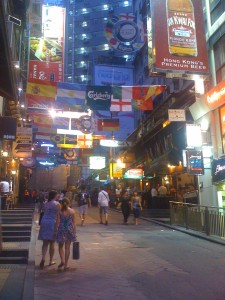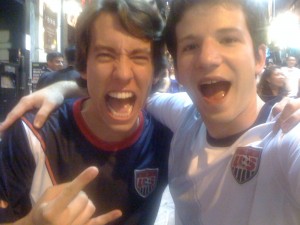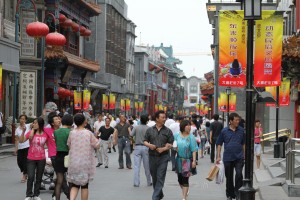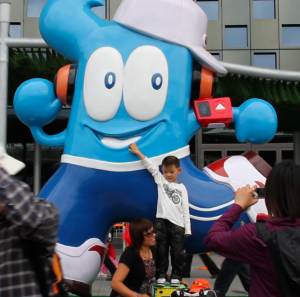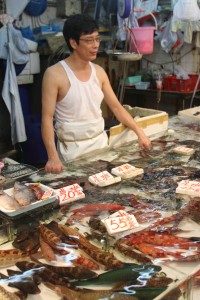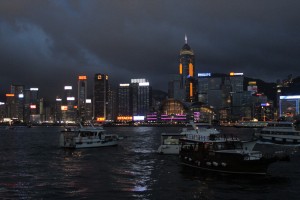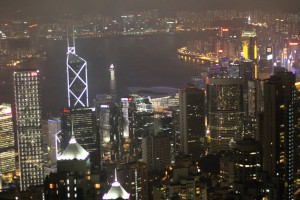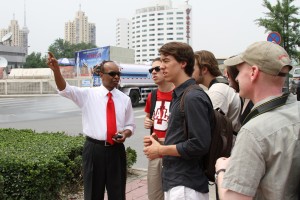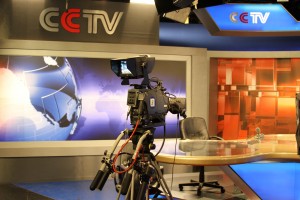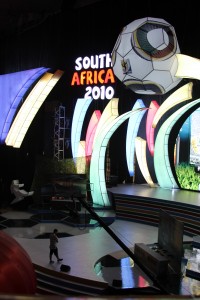Kevin Grazioli
Kevin Grazioli is a Senior studying Telecommunications at Ball State University. He is also currently minoring in Chinese at Ball State.
Posts by Kevin Grazioli
One Game Changes Everything
19Every newspaper you open has feature sections on it. Am I talking about the Detroit Tigers season so far? Nope, it’s the World Cup, and it’s everywhere you look! At least outside of the United States, here in Hong Kong.
The game is simple, 22 players, 11 on each team, try to kick a ball into a net repeatedly over the course of 90 minutes. The entire world, subtract the U.S.A., goes absolutely crazy for this game. Coverage in the newspapers, on TV, and around the town has really painted the picture of just how big of an event this thing is. Our hotel lobby even has a score breakdown poster for it. Everywhere you go, any time of day, the matches are on TV, live. Whether it’s on a huge screen in a shopping district, or on the LCDs down in the subway, people are always standing and watching.
People here in China complain about the World Cup. They love it; don’t get me wrong. But their team failed to qualify. In a country of more than 1.3 billion people, the Chinese complain how they can’t recruit 11 players to field a decent team, yet somehow North Korea was able to do it. Regardless, China is full of fans. They range from rooting for the Germans, to the Spanish, even to the U.S.A.
During our time at CCTV we watched as the crew sat up the huge studio for the special World Cup show. Simply turning on the TV at any time of the day, one can witness World Cup news. Would you ever get this in the United States? I don’t think so. Granted, this year’s World Cup started while I was over here.
The coolest part of being here in Hong Kong for the cup is seeing the huge amount of foreign fans from all parts of the world. Dominic and I went down to the local pub, actually a street full of sports bars, to watch the latest U.S.A. game. Walking into an American 60’s-themed bar we looked up at the screen confused as the U.S. was not displayed. “Your game’s on over there,” a women shouts pointing across the street. Inside the bar across the way was pandemonium. In one section was the England v. Slovenia game, another the
U.S. v. Algeria game. England supports rallied behind their team cheering them on to victory. On the other side of the pub, people of all backgrounds were watchingthe Americans play. We meet some other students studying here in Hong Kong, a businessman from the east coast, and someone from Ohio! Cheering loudly, the place got tense as the U.S. entered overtime 0-0. Soon the U.S. scored a goal in the 91st minute to win it, the place went absolutely nuts. People emptied from pubs up and down the street, horns going off, high fives everywhere. Chats of U.S.A., U.S.A., U.S.A. went up and down the block. This was by far a great experience for a U.S.A. fan, one that I hope the entire nation will share with us, soon.
P.S. If you get some time, watch the U.S.A. play Ghana on Sunday the 27th at 2:30 PM our time, or 2:30 AM back home! Let’s go USA!
The Beauty of a Language
1Note: Due to limitations of our blog I can not display Chinese characters. I have placed a graphic at the end of the post to which you can refer to for the characters. Example: “A” in the post would be “A” in the graphic below. Thanks!
When you think of a beautiful language, French or Italian comes to mind. Flowing words, rolling r’s, and wonderful pronunciation all combine into a ocean of words. On the opposite side of the spectrum is Chinese. Crazy pictures, impossible sounds, and ridiculous combinations astound the mind into thinking quite the contrary of a language of love. Or is it?
The Chinese language is made up of more than 40,000 individual characters. A character is simply a single picture with a given meaning behind it. According to the Chinese government, an educated adult will know between 6,000 and 7,000 characters in his or her lifetime. Knowledge of 3,000 characters is generally required to read a Chinese newspaper.
During the cultural revolution of China in the 1950s, the government realized the need to simplify the language forgoing the traditional complex characters and settling on Mandarin in a simplified form. This is the language you will see and hear today.
In general when you see a character it has one single meaning. For example the character “A”(hao) means good. If you study the character closely enough you can see the outline of a women on the left side and a man on the right. When a man a women are together things are always good. Thus “A”means good individually. If we place a “B” (ni), meaning “you,” next to it and create “BA”(ni hao) we would be saying hello. By combining individual characters together words and phrases can be formed. Literally translated “BA” (ni hao) would mean “You Good,” but in Chinese it means “hello.” Simple enough? It gets better!
It is next to impossible to memorize each and every character. Fear not! The language is comprised of little over 200 radicals. Radicals are simple elements of each character that generally mean something. If we look at the word “C” (re) or hot, we can see the fire radical contained in it, or the four lines on the bottom of the character. Picture a fire lit beneath the character. You would now know that anytime you see the fire radial on a different word that it will mean something similar.
Finally, lets look at the character “D”(ren) or people. You can easily tell how the character looks very similar to a person. In fact the 2010 World Expo used this character in creating the mascot Haibao. The spoken word itself actually means treasure of the sea. If you can learn these simple meanings behind the characters your Chinese learning will be leaps ahead.
The most fascinating aspect of the language is the tones. You can say the exact same thing, but with different tones allowing you to create four different words. By simply inflecting your voice sharper, softer, null, or sharp then soft, you can create such tones. Let’s again use the word hao as an example. “A”(hao) means good and is low falling and high rising. “E”(hào) means very grand water. “F”(háo) means roar or cry. Finally you might have a just a neutral hao meaning something completely different.
During my first attempts to speak the language I was extremely careful to try to pronounce everything clear and slow. It didn’t work. Ironically however when I mumble through words at a lower voice level the translation comes across with success. It seems most natives speak this way, and yet it is all understandable.
At first, I thought that using pictures as a language would be extremely primitive. In a way it is, but it has developed over thousands of years into a beautiful art. Communication at the highest level accords here. Schools here teach choreography classes using ink and brush. In English every word has a meaning. In Chinese every character has a story.
Up in the Clouds
3Pixar’s “Up” came true for our group last night as the seven of us truly were among the clouds.
Our adventure started at 4 o’clock in our hotel lobby where we meet up with Thomas from Hong Kong Baptist University. Hopping on the MTR (the local subway system) we quickly dashed away into the Hong Kong underground. We emerged at a stop shortly down the line where Thomas lead us inside the strange world called a wet mart.
The closet thing I can think to describing this self perpetuating marketplace is a bustling train station. Fresh fish swim in open tanks while their counterparts lay on ice waiting for a buyer to fry up at home. Vendors sell every type of fruit imaginable while farmers uncage chickens for a paying customer. Thomas tells us this is their version of a local Wal-Mart, that residents in Hong Kong venture to one of the thousand of these markets scattered across the city every night to get food for the next day. While this market feeds the appetite of Hong Kong other locations fuel the culture.
Our next stop on the “tour” took us to the famous flower and bird streets of Hong Kong. In this wild market, birds of all types can be found. When a man emerges into retirement he typically purchases a bird of his liking. All over you can see these gentlemen walking around, playing checkers, and conversing, all with their birds in tiny cages. Right across the street is the Hong Kong flower market where flowers of all shapes and origins are put on the market. The Peak was just one more MTR ride away, or so we thought.
We emerged at an MTR near the harbor on the opposite side. Walking to the river front produced some spectacular views of the entire harbor. If you’ve ever seen a picture of Hong Kong, it was likely taken from this spot. Looking across the harbor it’s possible to see just about every name brand in
the corporate world. Each building lights up in their own light show in its bid to attract attention. At 8 PM the show starts. Titled, A Symphony of Lights, more than 44 buildings emit a synchronized laser light show illuminating the harbor and surrounding area. Truly a spectacle to witness should you ever land in Hong Kong. We soon found ourselves on a ferry going across the harbor to opposite side.
Debarking from the ferry though Victoria Harbor we landed in a high fashion shopping district. Overlooking the harbor, Victoria Peak emerges out of the land on Hong Kong Island giving breathtaking views from the summit. Winding roads and staircases make their way to the top viewing point creating a long hike up a 27% incline. Thankfully we took the tram.
Arriving in yet another shopping center we ascended 10 escalators finally emerging on the viewing platform of the the
peak. Walking outside we were immediately inundated by clouds surrounding our bodies. Glancing up at a light post we witnessed just how fast the visible mass of water droplets were moving across the summit of the peak. Slowing walking to the edge of the platform the reason to come to the top soon became apparent. A city unlike any other in the world appeared. Still lit up it was here where we could see the entire harbor. Boats of all shapes and sizes moved back and forth in the water transporting people, imports and exports. Viewable was the Two International Finance Centre, the tallest building in Hong Kong, stood out to me as the building from the new Batman film, The Dark Knight.
Going back down the tram felt a little weird, I think we all wanted to stay up in the clouds a little bit longer.
Video Blog 6
1Be sure to check out the full HD version at http://vimeo.com/12555155. Thanks everyone!
Shots from around Shanghai and Beijing
1This are some shots from around Shanghai and Beijing over the course of our trip so far I took.
Apologizes everyone for not being able to embed but you can still check out this video by going here!
Please go to http://vimeo.com/12531700 to watch it in glorious HD, enjoy!
CCTV Tour
6Imagine a city with 16 separate districts. Each district communicates in a different language, exchanges a different currency, and drives different cars. The city has one leader, one voice. This is CCTV, or China Central Television. On Wednesday our group was lucky enough to tour the CCTV complex in Beijing. What goes on behind the scenes is truly incredible.
Our tour began at the security gate where an armed guard (Police and security guards do not carry guns and citizens cannot own one) lined us up only allowing us to enter the compound one at a time. Tony Perkins, a sports anchor and reporter for the English CCTV channel, CCTV News International (or CCTV 9) was gracious enough to give us a tour of the facilities. We started out by visiting the studios where CCTV broadcasts 24 hours a day, 7 days a week on 16
different channels. The channels cover everything from Finance to Sports to Movies to Law to News. We learned that CCTV broadcasts in Chinese, English, Spanish, French, Russian, and Arabic, each having its own channel. The language channels all have news programs, sports programs, and general variety programs. You can imagine the amount of programming. We were fortunate enough to visit the CCTV News International live set.
Stepping onto the newly built set was eerily familiar to a set back home. Except for the few Chinese sentences written on the wall I would have thought we were back home. During our time the crew was setting up it for the special World Cup show to be broadcast later this week. As an anchor walked in we were ushered into the control room to witness the hourly newscast.
While all of the anchors on CCTV News International speak English, some do not speak Chinese. Typically in the control room the producer of the show will speak English to the anchor while the rest of the crew communicates in Chinese. The layout of the control room took everyone by surprise. Instead of going back in depth, the control room was simply one very long desk in front of monitors. Everyone from the TD to the sound is placed in front of this long desk. This was the case out of the four or so control rooms we toured. Suzy even noticed CNN was tuned in on a monitor! We suddenly became very appreciative of Ball States facilities as we discovered CCTV News was still editing on DVCPro tape machines and playing them back for broadcast.
Next we were shown a huge auditorium studio, the largest at the complex. CCTV 5 Sports was gearing up for World Cup 2010 coverage inside of it. Apparently every three or four weeks a new set is built for various shows with performers coming from around the country to be on TV. It is also the location of the famous New Years show that has a 90% market share across China.
Finally we made our way into the great office tower. Our group was able to talk to several people working on different shows for CCTV and even ran into an intern who attended school at DePauw University in Indiana! This floor definitely had the hustle and bustle of a newsroom with everyone busy at work. Several English to Chinese dictionaries were spread about as writers prepared their shows in English.
Overall our tour of CCTV couldn’t have been better. To visit a media empire that broadcasts on 16 different channels that reach over 1 billion people was unforgettable. Special thanks again to Tony for giving us such a great tour.
P.S. Should you have the urge to watch some of CCTV’s quality programming, all CCTV channels are free at http://english.cntv.cn/live/
Late Night Marathon
2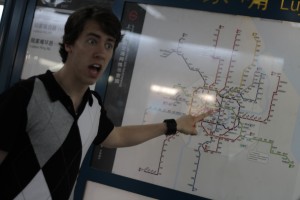
The average human can probably run up to 10 miles per hour. The average Ball State student in China can run much faster, when it’s absolutely necessary. And problems escalate very quickly if you’re running late.
The effectiveness of the Shanghai Metro Authority continues to amaze our group to this day. Trains arrive frequently, on time, and without problems. As the elite eight descended the escalator down into the special Metro station created for the Expo they realized a problem. It was almost 10:30 PM, or 22:30, and many metro lines begin to cease operations around this time. Could the team make it to the transfer station before the last train left? Some quick calculations revealed that the Americans had a fighting chance. They could make it, with exactly 3 minutes to spare.
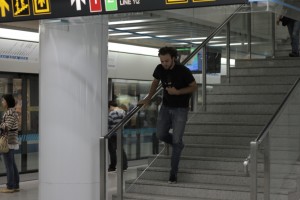 Rushing frantically to the ticket counter one of the members stepped up to collect fare money. His fingers flew over the touch-friendly ticket vending machine. Wads of cash and coins were inserted into the machine, just one more yuan to hit 40. OUT OF SERVICE. What was going on? The machine suddenly spit back 15 yuan in coins. Where is our cash? What happened? A quick trip to the service counter and a phone called is made. Two minutes pass by and the money pops out. Repeat ticket process on machine 3, success. To the trains.
Rushing frantically to the ticket counter one of the members stepped up to collect fare money. His fingers flew over the touch-friendly ticket vending machine. Wads of cash and coins were inserted into the machine, just one more yuan to hit 40. OUT OF SERVICE. What was going on? The machine suddenly spit back 15 yuan in coins. Where is our cash? What happened? A quick trip to the service counter and a phone called is made. Two minutes pass by and the money pops out. Repeat ticket process on machine 3, success. To the trains.
Transcending deeper into the underground of Shanghai the group went to the platform for line nine. Soon, the all too familiar sound of an approaching train creeps into the station. “WAIT!” Dominic shouts out from across the platform. “We have the wrong train!” “What?” “Are you sure?” “I’m sure! We want to go the other way” replies Dom. They sprint to escalator and down onto the other side of the platform. Next train in 4 minutes.
Once onboard, the train abruptly comes to a dead stop in the middle of the tunnel. “Guy’s it’s going to be close, we might have to run,” comments one of the eight.
Line nine pulls into Yishan Road right at 22:31. Debarking from the train the group heads for the stairs. Three escalators later and everyone reaches the main exit only to discover that this station isn’t really a transfer station at all. In oder to transfer trains you must go above ground, walk a long way down a covered pathway, transverse up more stairs, go down two escalators, and then finally turn
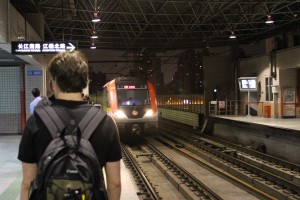
a corner to get to the platform. Pandaemonium sets in as the group runs the course. Some get left behind. Scores of young Asian students follow closely in pursuit of the Americans.
The stronger members of the group arrive first at the station. No train. Did they miss it? Is it still coming? A quick glance at a TV monitor breaths a sign of relief into the group. The final train still has two minutes until its arrival. The last of the group emerges from below. Next stop, Cheifeng Road.
Photography by Kevin Grazioli
Skip the Cedar Point Ticket and Get a Cab Ride in Shanghai
29
Shanghai expressway looking out from our hotel room. The metro line can be seen on the right side of the picture.
Mom always said look both ways before crossing the street. If there ever was a time to follow her advice, this might be it! The Shanghai traffic is incredible. All types of vehicles occupy the street from petite Volkswagens to trucks three times the length of an “American” truck. The flow of traffic reflects the people of the city. Traffic rules simply do not exist. Horns are used to the fullest potential. It seems an accident should happen every 30 seconds, yet there are very few.
I’ve simplified it down to two types of people who ride in cabs in Shanghai. There are those who are scared for the their life (cough, cough, our professors) and then there are those who absolutely love the ride. Weaving in and out of traffic, it is always a high-speed chase to your destination. Being cut off is the norm. The larger your vehicle, the more road you control. The younger the driver, the faster you will reach your destination.
Our interactions with the taxi drivers have been better then anticipated so far. A Shanghai local on the plane told us that most of the drivers are very honest and fair, as it’s very competitive. For the most part I’ve been able to communicate with the drivers on where we want to go. In such a big city it still amazes us the drivers know how to get there. With the majority of the taxi drivers only speaking Chinese the World Expo has gone to the length of setting up a hotline you can call should you need help communicating with the driver. Thankfully we haven’t had to call the number yet.
As with everything else here, the cab ride was extremely cheep. A ride from our hotel to the Expo, about 30 minutes depending on traffic, cost us only $10. Put four people in a cab and you’ve got a great deal. Beat that NYC!
